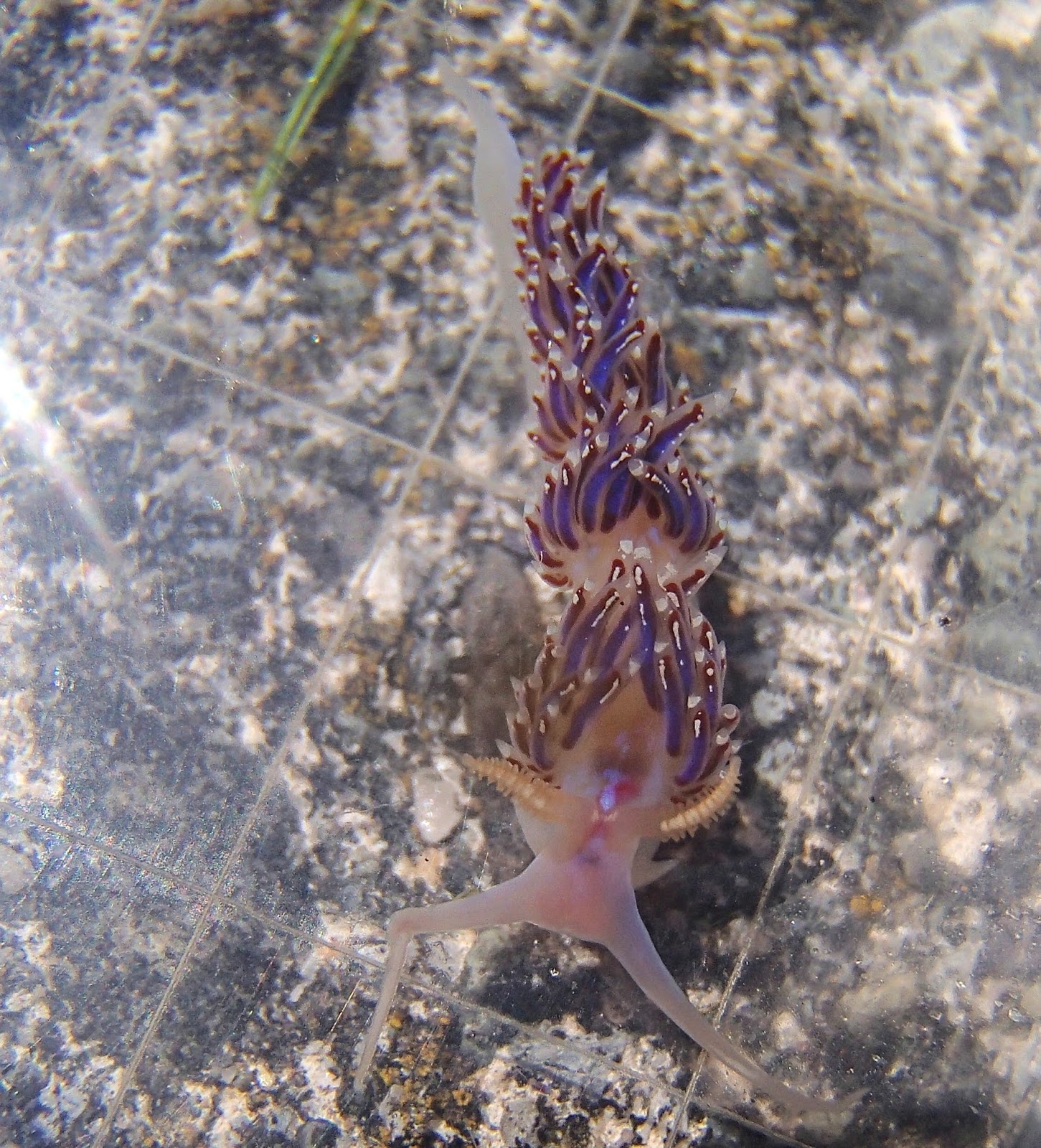 |
| Glaudine is still hanging around |
On top of the normal data collection that we do here at the
Marine Station, other projects are also done to examine specific aspects of the
marine biology of Sherkin. For the last couple of days we have been collecting
data for the ‘Sargassum Project’. Sargassum is an invasive seaweed species that
originated in Asia and has been increasingly found in Europe (including
Sherkin).
Sargassum spp invasion can be a problem as it can grow very
quickly over large ranges of the shoreline (whereas lots of native seaweed
species have a niche area that they mainly inhabit). This versatility enables
Sargassum to affect lots of areas and unfortunately it can displace some local
species and form large mats when it grows very tall – these large mats can
cause all kinds of problems, for example:
- Large mats at the surface can block sunlight to other seaweed species growing below them preventing them from being able to photosynthesize as much and therefor reducing their fitness
- By preventing growth of lower seaweed species that form habitats for other animals and plants Sargassum mats can reduce habitats for these epiphytic organisms
- Sargassum mats can become so thick that they can damage boats and make the water impossible to swim in – this can increase costs associated with ship repair and can make areas less appealing to tourists
- Being deliberately transported for use in ponds
- Being accidentally transported in ballast water of ships
Anyway, so Sargassum can be problematic.
The Marine Station has been monitoring the progressive
abundance of Sargassum on the island for a number of years and it is really
interesting to see how it has been gradually increasingly found in more and more
sites around the island.
For the past couple of days we have been suiting up (in
wetsuits) and snorkelling in Horseshoe Harbour sampling transects and reporting
back the numbers and heights of any Sargassum individuals we see there.
 |
| Surveying in Horseshoe Harbour (one person in a little blow-up raft with two snorkelers either side of the boat) |
The last Sargassum report from Sherkin was done a few years
ago and it is INSANE to see how much more Sargassum is in the bay this year
than in previous years – in 2011 they reported 7 Sargassum plants in the bay,
this year we got into the water (a little chilly) and the moment we put our
faces in we could see that the problem had definitely progressed – now we are
finding that in many areas of the Bay we are reporting 100+ individuals
completely covering the bottom and ranging from a few cms to many metres tall! (Tomorrow
I will attempt to get a few pictures of Sargassum to show you what this
invasive Asian alien species look like) - *I have collected some pictures!!*
 |
| The invasive seaweed - Sargassum! |
So that is what I have been doing currently – viewing the
problem of an invasive species firsthand. It is really interesting after
spending 3 years learning bits about invasive species’ and the problems they
can cause – I wish we had done a little field trip at University to observe an
invasive species at work, I think that would have really hammered home the fact
that invasive species are a very real problem that deserves more attention.
On a different note..
I found a nudibranch today!!!!!
For those of you who don't know, nudibranchs are more commonly known as 'sea slugs' and are a marine mollusc. They are also SUPER EXCITING and are often stunning colours and crazy shapes. We named her Daenerys (because we've been watching too much Game of Thrones) and brought her back to the lab to examine/stare at/take a billion pictures of..
 |
| Daenerys looking stunning |
 |
| Daenerys looking fabulous |
 |
| She can even crawl/slide along the underside of the water surface!!!! Because she is awesome. |
After taking a gazillion pictures of her we identified her and we believe her to be Facelina auriculata whose key characteristics are:
- Propodial tentacles, long oral tentacles and annulate rhinophores present
- Foot narrow, cerata short, in distinct bunches, long narrow tail
- Cerata with red digestive gland and iridescent blue surface colour
 |
| We also found this rather large fellow who is a 'Devil-eyed crab'. Although perhaps less delicate than Daenerys he is still VERY fabulous |











